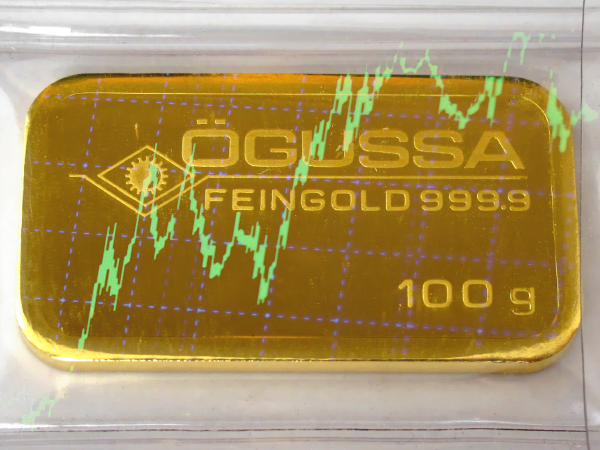
Due to a new round of fiscal stimulus and waning global confidence in the dollar, Guggenheim’s Scott Minerd argues the Fed may resume buying gold in a big way.
In a recent note, Scott Minerd, chief investment officer of Guggenheim Investments, outlined a possible scenario that could manifest as a result of the Federal Reserve’s massive pandemic-related stimulus. The U.S. dollar has held a tight grip on its status as a global reserve currency over the past few decades, yet recent years have seen talks of that status potentially being usurped by another sovereign in the not too distant future, with the Chinese yuan as perhaps the most aggressive candidate.
Minerd doesn’t believe that the greenback’s place as the reserve currency has been placed into question so far, but he already sees concerning signals in the form of the dollar losing its market share. These are a clear result of the Fed’s attempts to deal with a massive government deficit while also staving off a recession.
In his note, Minerd expanded upon a sort of vicious cycle that the Fed could soon find itself in. As the CIO explained, the Fed’s current rate of asset purchases is outpacing the rate of bond issuance, and the central bank is likely to try and solve this problem by upping its asset purchases to a massive $2 trillion annually.
Although the Fed’s recent pumping of trillions of dollars into the economy represented the biggest stimulus to date, Minerd thinks that an official (and even greater) quantitative easing (QE) program is on the way. With a budget deficit exceeding $3 trillion and the Fed’s commitment to boost the economy at any cost, Minerd expects the central bank to keep interest rates zero-bound for a minimum of five years, if not longer.
Needless to say, any environment of low or negative interest rates greatly benefits gold, and the yellow metal has been reaching all-time highs in numerous countries whose central banks have adopted similar policies. But there are more reasons why gold could be the refuge investors need moving forward. A commitment to zero rates, especially over a protracted period of time, would likely raise inflationary expectations and potentially pave the way for a sudden spike in inflation.
Along with weakening the greenback on their own, intrusive measures such as these could reduce confidence in the dollar and intensify speculation in regards to its place as the reserve currency. In return, the Fed could attempt to offset its risky policies by accumulating even more gold, despite its reserves already far exceeding those of any other central bank. As Minerd notes, the historic tendency of sovereign nations to hoard gold in order to maintain economic leverage is well-documented, and Minerd would not at all be surprised to see the Fed becoming a major gold buyer in the near future to avoid losing dominance on the global stage.









